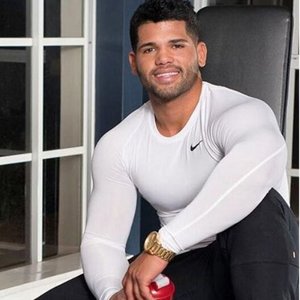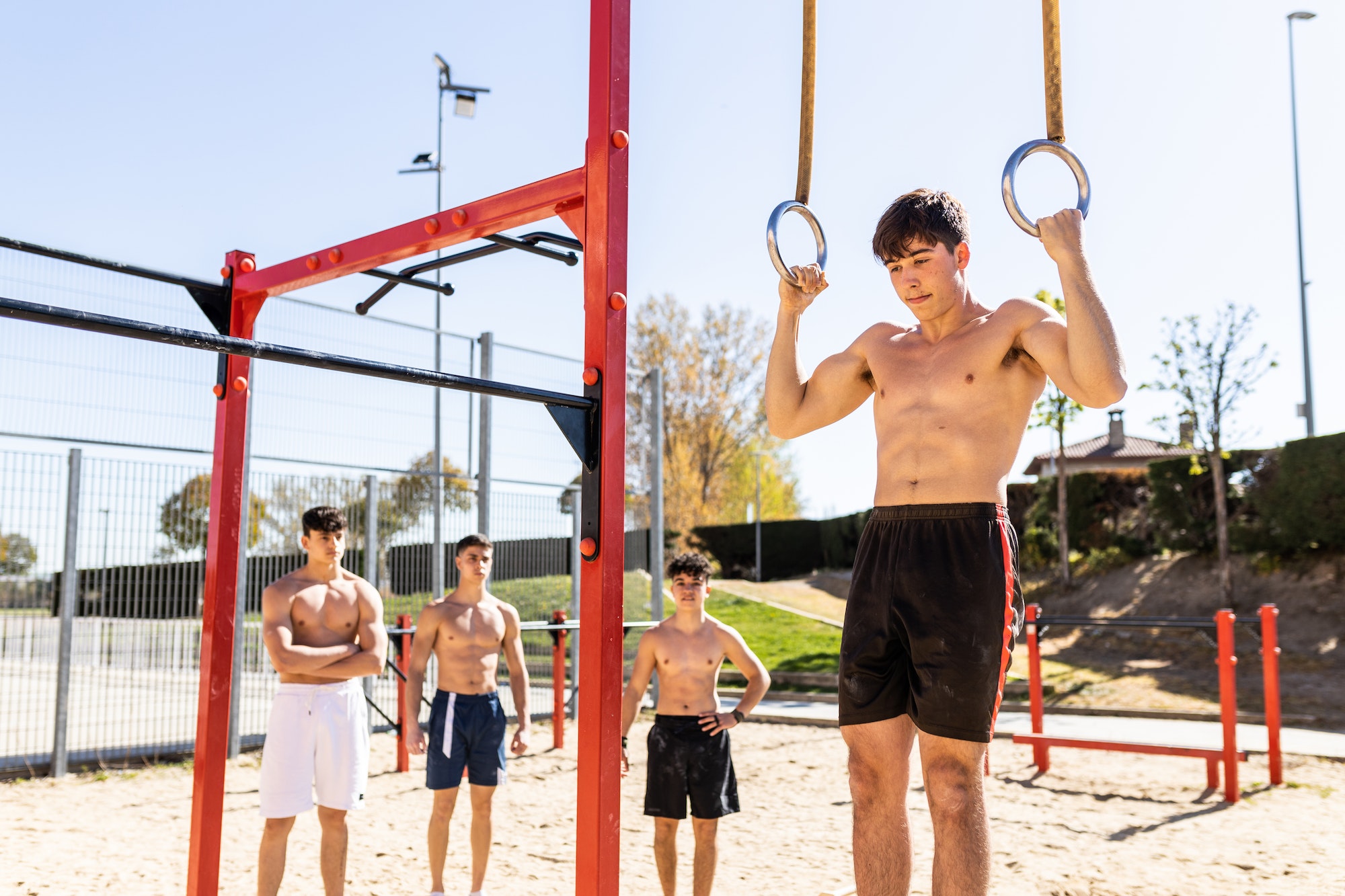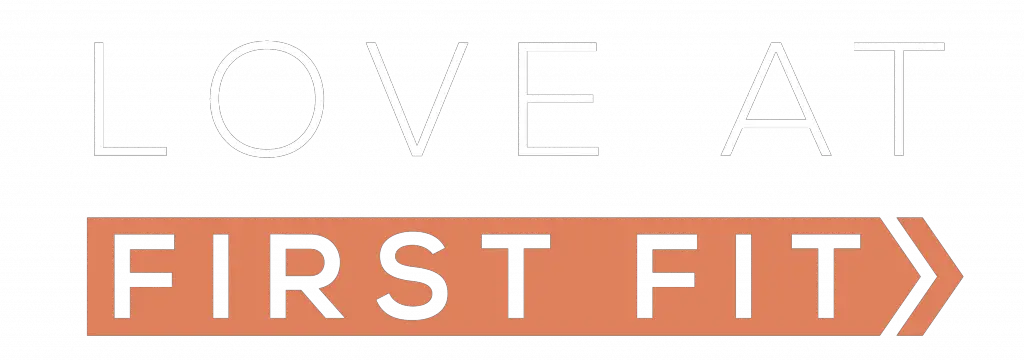Compound exercises for calisthenics are the bread and butter of the calisthenics world. You’ll be able to use these exercises for years to come as they can be easily scalable for anyone.
The exercises below will be primarily for beginners, but advanced people can also use these. Compound exercises are exercises that use multiple muscles at the same time.
- Inverted Row
- Push up
- Planks
- Squats
- Lunges
Inverted Row
- Take a horizontal bar and grab it with both hands
- Lay out your feet in front of you on the heels
- Make sure your core is rigid through the whole movement
- Pull yourself up while squeezing your shoulder blades
- At the top make your back is depressed and your shoulder blades are still squeezing
- Let yourself back down slowly
This exercise is great for beginners because mainly people who start calisthenics can’t do a pull-up and that’s ok, we all have to start somewhere.
If you were to use rings with this exercise you’d be able to scale it to an easier difficulty that’ll suit you. In addition, this exercise can be modified in multiple ways. For example, when starting off, if the lower position is too hard for you then you can scale it back a bit by standing up and leaning back. And as you become stronger, the lower position will become easier over time.
If you have rings, there are three grips that all have their own benefit.
[amazon box=”B07CGCD7JH”]
A neutral grip is the best for overall muscle recruitment because it hits everything but let’s say you want to focus on your upper back, so you’d turn your hands outward, facing away from you. Or if you wanted to focus more on your biceps then you’d turn your hands inward facing towards you.
The muscles that are used in this exercise are all of your pulling muscles. There are many in your back but the main ones are the latissimus dorsi, rear deltoids, rhomboids, trapezius, biceps, and forearms. In addition to those muscles, the abdominal muscles and a little bit of your lower body are being worked.
Why Inverted Row is one of the best bang for your buck that you’ll be able to use forever:
- Recruits a lot of muscles for engagement
- Easy for beginners
- Great scalability for harder difficulties
- Different grips for different muscle recruitment
- Endless modifications and variations
- Works all pulling muscles and stabilizers
Push up
- Lay flat on your belly with legs extended out
- Place hands shoulder-width apart
- Push up with your arms
- Make sure you’re bracing yourself with your core
- Slowly lower yourself down
- Push back up
You knew it was coming, the push-up. The push-up is a calisthenic bread and butter compound movement.
Everyone does this exercise including athletes, bodybuilders, and martial artists. It is a big compound exercise that uses, you know it, your pushing muscles.
Just like the inverted row it’s great for beginners and has an endless amount of scalability. For example, if you aren’t able to do a full push-up, you can start on your knees to make it easier for yourself.
And if that’s too hard you can do a wall push-up. Or let’s say you want more of a challenge, you can put your feet on an elevated surface to make it more challenging.
Feet elevated push-ups work the upper pecs a little more. Whereas if you were to put your hands on an elevated surface with your feet on the ground then those would work your lower pecs a little more.
Neutral hits everything equally.
The muscles that are being worked for this one are the pectorals, anterior deltoid, triceps, and core. As stated earlier, depending on the leverage of your hands and feet you can focus on one part of your pecs than the other.
- Great scalability
- Beginner friendly
- Endless options of variations and modifications
- Works all pushing muscles
- Works stabilizers
Planks
- Lay flat on your belly
- Support yourself on your elbows and forearms
- Have your feet flat out behind you
- Brace your core muscles
- Make sure to stay rigid through the hold
- When you become tired lower yourself down
Planks are a tired and tested core compound exercise that has been used for years. They are so great because it teaches you to use all of your core muscles in sync with each other.
If you’ve tried this exercise before or you’ve just tried it, you might’ve noticed that when you brace yourself, you’re not exactly using only your core.
Your glutes, quads, trapezius, rhomboid major and minor, latissimus dorsi, pectorals, serratus anterior, deltoids, biceps, and triceps are all working to keep your body stable.
In addition, using all those muscles it’ll definitely improve your posture by strengthening your spine and all the muscles that support it.
So, if you have tech-neck then definitely do planks to stand taller and better.
There are many variations of planks also. If you have an imbalance on either side of your body side planks are a great variation to add to your routine. They work mainly the same muscles as a normal plank but a little differently.
Mainly your obliques and all the muscles on your side, which is great if you have scoliosis. Also, if they become easier you can always add weight to the exercise.
- Works stabilizers
- Easy to scale
- Isometric exercise
- Helps posture
- Works whole body
Squats
- Stand on your feet with them shoulder width apart
- Have your arms out in front of you
- Lower yourself down slowly
- While lowering yourself make sure to support your back
- Go down as far as you can comfortability
- Go back up to starting position
Squats are one of the greatest exercises for the lower body because they work all of the muscles in your lower body.
They are easily scalable and there are many variations of them out there.
But for beginners the simple bodyweight squat is one of the best out there, you don’t need equipment, and you can do them anywhere.
Squats work all three of the glute muscles, the quads, hamstrings, adductors, hip flexors, core, and calves.
They also come packed with benefits, a higher vertical, improved core strength, improves mobility, burns a ton of fat, improves posture, are great for the joints, and many other benefits.
Once you start incorporating these in your fitness journey you’ll start to notice how daily movements become easier such as, picking things up, standing up from a seated position, and many other situations.
- Improves posture
- Easy to scale
- Works all leg muscles
- Burns fat
- Improves mobility
- Improves functional strength in everyday life
Lunges
- Stand with your feet apart
- Act as if you’re taking a giant step
- Bend at the knee while going down
- Pause
- Slowly stand back up with the back leg moving toward the front leg
- Take a wide step with the opposite leg
- Rinse and repeat
Lunges are a great exercise for using your body weight. They’re so great even cyclists and runners use them in their routines.
And just like the bodyweight squat, they can be done anywhere from your living room to an outside park, and no equipment is needed.
This makes them a beginner-friendly exercise. The big difference between lunges and squatting is, that lunges are a unilateral exercise, meaning they work each leg individually.
So, if you’ve noticed that during your squat, one leg is doing more work than the other, then this exercise is great for you.
We all have a side that is stronger than the other so it helps to strengthen the weaker leg and doing this gives you better stability and balance on each individual leg. And with the stability, your gait as you walk will improve greatly.
In addition, to stability, they also work your core muscles and back without added strain on them. So, this improves your posture just like the bodyweight squat.
There are many variations that you can do with this exercise, like stated above if you were doing them in your living room you could opt for stationary lunges.
These do work certain muscles more than the others such as glutes, quads, and hamstrings.
Side lunges mainly develop balance, stability, and strength. The lateral motion of this variation gives you a nice change of pace, it works your legs a little differently than a walking, stationary, or reverse lunge. By targeting your hips and quads.
Walking lunges are what you mostly see people in gyms doing. They challenge your stability, balance, and coordination.
The muscles these target are the core, hips, and glutes. They also improve your range of motion and functional strength that is used in everyday movements.
Reverse lunges are just like stationary ones but are easier than side and walking. So, if you’re having trouble with those then you can opt for this one. They activate the same muscles as the stationary ones and put less stress on your joints.
- Easy to scale
- Many variations
- Improves mobility
- Improves functional strength
- Improves posture
- Burns fat
- Works all leg muscles
- Improves balance and stability
Loveatfirstfit.com is a participant in the Amazon Services LLC Associates Program, an affiliate advertising program designed to provide a means for sites to earn advertising fees by advertising and linking to Amazon.com. We may earn a commission when you buy through links on our site.

Austin is the author of loveatfirstfit.com and a personal trainer with extensive knowledge in nutrition. Austin is passionate about helping others to find a suitable healthy lifestyle and feel good about themselves. Austin’s goal is to help people push their limits and achieve their physical performance.

